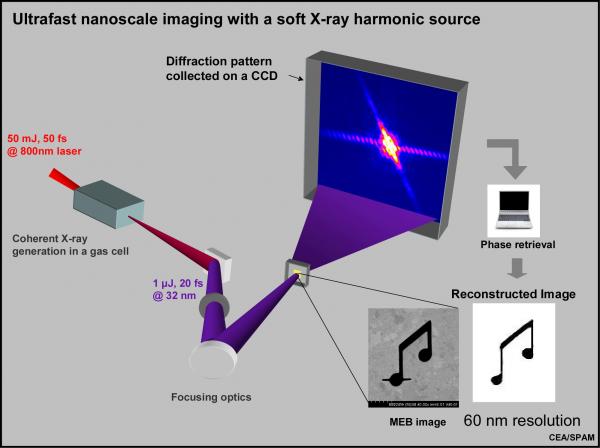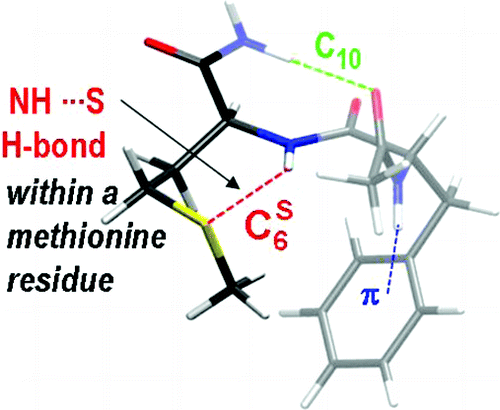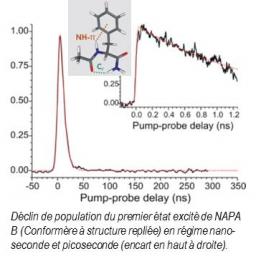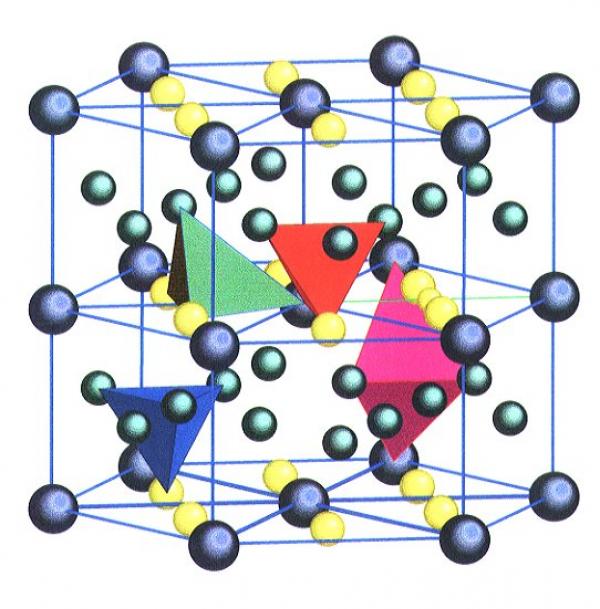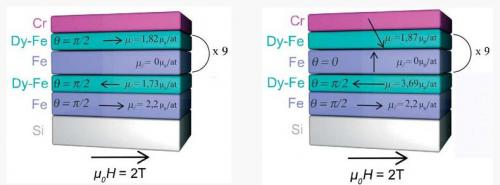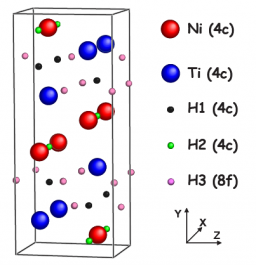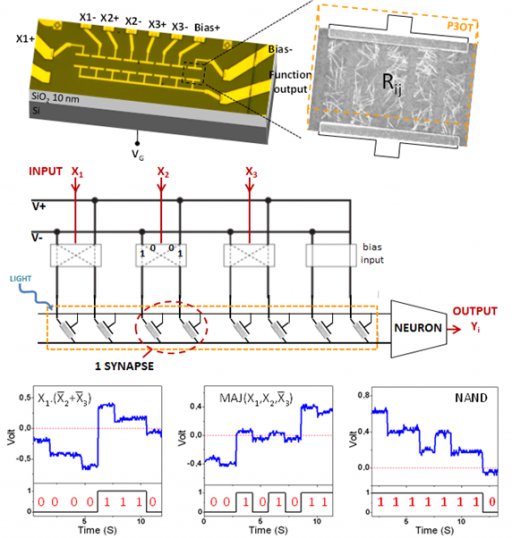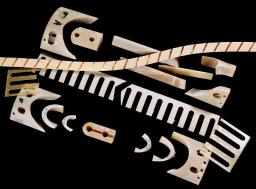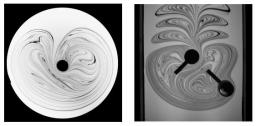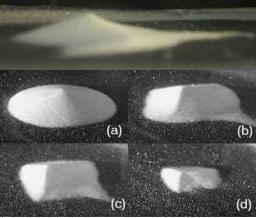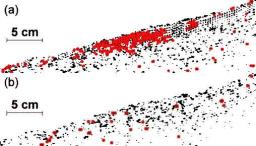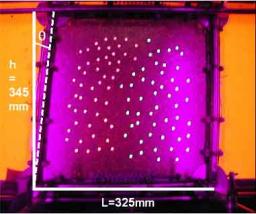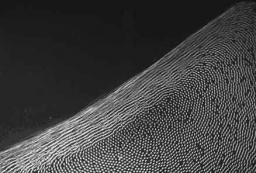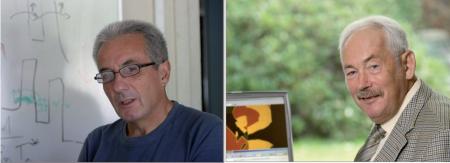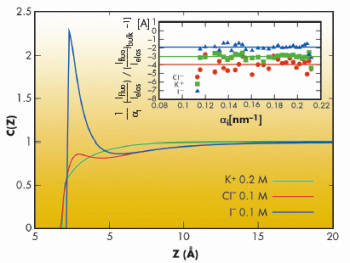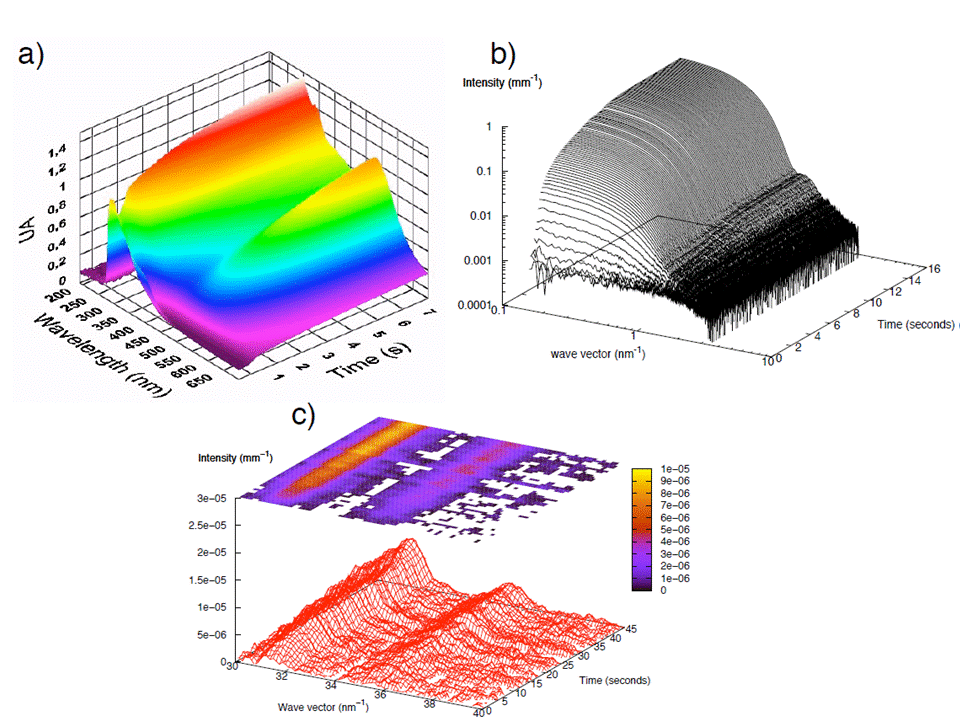Pages scientifiques 2008
|
Merci de lciquer ici pour accéder au nouveau site web Ultrafast Nanophotonics |
Imager des objets individuels avec une résolution spatiale de quelques nanomètres et une résolution temporelle de quelques femtosecondes revêt une importance fondamentale dans de nombreux domaines de la science et constitue aujourd’hui un défi fascinant. Les progrès de la diffraction cohérente de rayon X ont démontré le très grand potentiel de cette technique pour imager des structures nanométriques uniques et non périodiques[Miao, Nature 400 (1999); Pfeifer et al., Nature 442 (2006)]. L’imagerie par diffraction X cohérente est élégante par sa simplicité expérimentale : un faisceau de rayons X cohérents illumine l’objet étudié et la figure de diffraction est mesurée dans le champ lointain sur un détecteur à résolution spatiale (le signal est proportionnel au carré du module de la transformée de Fourier de l’onde issue de l’objet.) Pour inverser la figure de diffraction et ainsi obtenir une image dans l’espace réel, il est nécessaire de connaitre les phases du champ sur le détecteur. Ceci est réalisé par un algorithme itératif (la figure montre en bas à droite l'image reconstruite). L’imagerie sans lentille a récemment été démontrée – dans le régime mono coup [Chapman et al. Nature Phys 461 (2006)], et même dans un dispositif pompe sonde donnant une résolution temporelle [Barty et al. Nature Phys (2008)] – à 13,5 nm sur le Laser à Electrons Libres FLASH.
Single-shot nanoscale imaging with a harmonic soft X-ray source
Imaging individual objects with few nanometers resolution in space and few femtoseconds resolution in time is of fundamental importance in many areas of science and represents today a fascinating challenge. Advances in coherent x-ray diffraction have demonstrated the very high potential in imaging single non periodic nanometer scale structures [Miao, Nature 400 (1999); Pfeifer et al., Nature 442 (2006)]. Imaging from coherent X-ray diffraction is elegant in its experimental simplicity: a coherent X-ray beam illuminates the object under study and one measures the far-field diffraction pattern on an area detector (proportional to the modulus squared of the Fourier transform of the wave exiting the object). Inverting the diffraction pattern into an image in real space requires retrieving the phases of the diffracted far-field, this being achieved through an iterative algorithm (image retrieved shown at the bottom right in the figure). The lensless imaging has been recently demonstrated – in the single-shot regime [Chapman et al. Nature Phys 461 (2006)], and even in the time-resolved pump-probe scheme [Barty et al. Nature Phys (2008)] – at 13.5 nm on the VUV-FEL FLASH.
Cette thématique phare du groupe vise à collecter des données structurales précises en phase gazeuse afin d’étalonner la modélisation des interactions moléculaires contrôlant la structure des biomolécules.
Les atouts du groupe sont ici la maîtrise d'expériences en phase gazeuse, (désorption par laser, jet supersonique et méthodes de spectroscopie optiques laser à plusieurs couleurs, UV et IR) et le développement poussé de l’interface entre expérience et théorie (modélisation des structures et spectres IR par chimie quantique, modélisation des processus en détente supersonique, validation des nouveaux outils théoriques pour la description des systèmes complexes).
Il s’agit ici d’aborder une question cruciale pour les systèmes biologiques, à savoir celle du lien entre structure (conformation, environnement), et dynamique (réactivité, relaxation).
Cette thématique est en prise directe avec les propriétés des protéines, vis-à-vis du devenir de l’excitation électronique consécutive à l’absorption d’un photon dans le proche UV. Les états excités de longue durée de vie laissent le temps à des réactions chimiques de se produire, conduisant à des dommages structurels susceptibles d’affecter la fonction biologique du système. Or, de manière générale, les molécules du vivant présentent des états excités de courte durée de vie, court-circuitant ainsi les phénomènes dommageables : ce sont ces phénomènes élémentaires contrôlant la durée de vie de l’état excité qui sont ciblés dans ces études. Il s’agit ici de :
- caractériser expérimentalement les durées de vie en fonction des espèces étudiées (expériences de type pompe-sonde), ainsi que la cascade d’états formés,
- modéliser les processus mis en jeu, notamment le rôle joué, pour la relaxation, par les intersections coniques avec des états excités de plus basse énergie.
|
The generation of radical species triggered by nuclear reactions which produce elevated Linear Energy Transfer (LET) ionizing particles in aqueous media, as well as their reactivity, may be drastically affected by extreme thermodynamic conditions (temperatures higher than 300°C, pressures higher than 100 MPa, acidic or alkaline pH). Such effects are studied by experimental and computational techniques. |
A related project under development concerns the use of new energetic particle sources driven by high intensity lasers. These sources deliver femtosecond bunches of MeV-electrons and also high LET protons, carbons which rendering possible the study of their interaction with various molecular systems, probed by optical spectroscopy. |
Transitions de phase: Une des questions centrales en physique de la matière condensée concerne les transitions de phase entre les états métalliques, isolants et supraconducteurs, dans les matériaux où les corrélations électroniques sont prédominantes. Ces transitions de phase sont accompagnées par des brisures de symétrie structurale et/ou magnétique qui renseignent sur les mécanismes microscopiques à l’origine des corrélations électroniques et des propriétés remarquables de ces composés. Le DRECAM développe des techniques de pointe pour mettre en évidence et caractériser finement les transitions de phase des matériaux.
Conditions extrêmes :Les conditions extrêmes (champs magnétiques, pression, basses températures ou haute densité d’énergie) permettent l’émergence d’effets nouveaux et intéressants dont l’étude renseigne sur les propriétés de la matière dans les grandes profondeurs ou au cœur des planètes géantes gazeuses. Des composés aussi simples et abondants que l’hydrogène et l’oxygène développent à haute pression et à très basse température des phases magnétiques, métalliques ou même supraconductrices inhabituelles. Dans l’oxygène solide sous pression, la structure est stabilisée par les couplages magnétiques dont la force est comparable aux faibles interactions intermoléculaires.
In the pyrochlore compounds R2Mo2O7, both rare earth R3+ and M4+ transition metal ions form a threedimensional network of corner sharing tetrahedra. The pyrochlore lattice is geometrically frustrated both for antiferromagnetic (AF) and ferromagnetic (F) nearestneighbour exchange interactions, leading to intriguing magnetic states such as spin liquids, spin ices or chemically ordered spin glasses. Pyrochlores are extensively studied since their electrical and magnetic properties strongly depend on the rare earth ionic radius r. Compounds with small ionic radius Y, Dy and Tb are spin glass (SG) insulators, whereas those with Gd, Sm and Nd are ferromagnetic metals. (R,R')2Mo2O7 series with different substitutions on the R3+ site show a universal dependence of the transition temperature versus r [1], suggesting that Mo-Mo interactions change sign at a critical value rc, which controls the SGF threshold. Band structure calculations and photoemission experiments [2] point out that the concomitant changes of the transport and magnetic properties come from strong electron correlations in the Mo t2g band nearby the Fermi level. More...
The magnetization of [Fe 3nm/Dy 2nm] multilayers has been studied. The samples were thermally evaporated under ultra-high vacuum at different substrate temperatures varying from 320 K to 870 K. In order to get the magnetization depth profile of these Transition Metal/Rare Earth (TM/RE) multilayers, an investigation of the structural, chemical, and magnetic properties was carried out. The samples were studied by High Resolution Transmission Electron Microscopy (HRTEM), Three-Dimensional Atom Probe (3DAP) and Polarized Neutron Reflectivity (PNR). The multilayers have been found to be rather homogeneous, except for the first two bilayers deposited on the substrate : the mainly crystalline structure of the first Fe layers leads to an enhancement of the ordering temperature of amorphous Dy. Moreover, at low temperature, a negative exchange coupling between Fe and Dy layers has been evidenced. Magnetization profiles have also been calculated by Monte Carlo simulations to support the PNR fits.
TiNi alloy is polymorphic. It exhibits a martensitic transition near room temperature between a cubic CsCl-type (austenite) and a monoclinic TiNi-type (martensite) structure. This transformation is at the origin of its shape memory effect. In addition, TiNi has good hydrogen storage properties under normal conditions of pressure and temperature. In austenic form, TiNi absorbs 1.4 H/f.u. under atmospheric pressure. No plateau is observed in the pressure composition isotherm curve (PCI) showing that hydrogen is absorbed in solid solution [1]. Hydrogenation properties of the martensite form are unknown. By adjusting a partial substitution of Ti by Zr and by using different elaboration techniques (melt spinning and induction melting), we were able to stabilize the two different crystallographic forms at room temperature for the same composition: Ti0.64Zr0.36Ni. The austenitic phase exhibits hydrogenation properties close to those of cubic TiNi. The martensitic phase absorbs up to 2.8 H/f.u. and shows a pressure plateau ranging between 1 and 2.5 H/u.f.. This plateau indicates the presence of two hydride phases in equilibrium. These results lead to the conclusion that hydrogenation properties of TiNi-type alloy are strongly influenced by the structural polymorphism [2] of the parent alloy. (more...)
MEcanismes de la Solubilisation ENzymatique des GEls
Construction d'un rhéomètre parallèle
L'invasion cellulaire est le processus par lequel des cellules malignes quittent un cancer primaire pour passer dans la circulation sanguine et former des métastases à distance de la tumeur d'origine. La formation de ces métastases est bien sûr un facteur essentiel du pronostic. Une des étapes de ce phénomène est le passage des cellules à travers la matrice extra cellulaire. Cette matrice a pour base mécanique un gel de collagène dont la cellule invasive doit couper les chaînes pour se frayer un passage. Nous avons entrepris d'étudier les aspects de ce processus relevant de la physique de la « matière molle » et le présent projet s'inscrit dans ce contexte.
Une des difficultés principales rencontrées lors d'une étude expérimentale « physique » de systèmes biologiques est la variabilité intrinsèque de ces systèmes qui impose, pour obtenir une image pertinente du phénomène, une multiplication des échantillons mesurés et donc un dispositif expérimental très simple pouvant être multiplié également. L'étude [1] que nous avons publiée sur ce sujet reposait sur ce principe : Le dispositif expérimental unitaire était constitué d'un récipient ( tube de centrifugation ) contenant le gel et l'enzyme dissous et une bille de plastique. Un grand nombre de ces tubes était placé dans un thermostat et observé par un unique appareil photo numérique. La donnée relevée était la durée totale de la dégradation révélée par la chute de la bille.
Le résultat le plus déconcertant de cette étude était que ce temps de dégradation ne varie pas comme une puissance entière de la concentration en enzyme, mais comme une puissance -3/2 environ. L'intuition et tous les modèles simples prévoient une proportionnalité inverse. Le seul modèle (à notre connaissance) qui permette d'expliquer cet exposant est le suivant : chaque enzyme reste confinée dans une « bulle » sphérique qu'elle crée et ces bulles percolent (percolation continue ou « fromage suisse »). Afin que la bulle reste sphérique, l'enzyme doit suivre une marche auto-attirante où la probabilité de pénétrer en territoire vierge est inférieure à un certain seuil. Dans ce modèle, l'exposant asymptotique est de 4/3, mais il est atteint par au-dessus et passe par 3/2 pour certaines valeurs finies.
Un phénomène moléculaire a pu être établi (ou fortement suggéré) par des mesures macroscopiques interprétées par des modèles de la physique statistique.
Quelques mesures de constantes élastiques de gels en cours de dégradation ont été effectuées et montrent des variations en loi de puissance, en accord, au moins qualitativement, avec les résultats précédents. Ces mesures se font avec un instrument relativement complexe qu'il est donc impossible de multiplier.
Des expériences préliminaires mettant en jeu d'autres couples enzyme-gel ont montré des exposants différents. Les problèmes tant biologiques que physiques sont donc plus généraux que celui considéré jusqu'ici. Des moyens expérimentaux et théoriques supplémentaires seraient utiles.
Le premier objectif du présent projet est de construire un montage expérimental permettant une mesure de l'élasticité du gel suffisamment simple pour être répliqué en plusieurs exemplaires.
Présentation PowerPoint
Conceptual questions in statistical physics
22 October 2008
Ecole Normale Supérieure, Salle Weill,
entrée au 45 rue d'Ulm, Paris 5ème
Programme
9:30 Alexei Grinbaum (CEA-Saclay). Welcome remarks9:45 Jos Uffink (University of Utrecht). On the analogy between thermodynamics and quantum entanglement
11:00 Chris Timpson (Oxford University). Thinking about information in the classical and quantum worlds
14:30 Tony Short (University of Cambridge). A quantum approach to thermal equilibrium
15:45 Owen Maroney (University of Sydney). Justifying Landauer's Principle
17:00 Discussion
Abstracts
“On the analogy between thermodynamics and quantum entanglement”
According to the second law of thermodynamics the entropy of a system cannot decrease by adiabatic state transformations. In quantum mechanics, the "degree of entanglement" of a state cannot increase under state transformations of a certain kind (local operations assisted by classical communication) In this talk I will explore the significance of the analogy between these two statements.
Chris Timpson (Oxford University)
“Thinking about information in the classical and quantum worlds”
Information plays, or is said to play, an increasingly central role in our thinking about the world; an increasingly central role in our thinking about physics. But what exactly is information? In this talk I will review some ways of answering this question; and reflect on the similarities and differences between information in the quantum world and in the classical. We need to get off on the right foot at the beginning in our analysis of the concept of information if we are to make any progress in the deeper question of what role a concept like information has to play in fundamental physics. I will suggest what that right foot is; and make a few steps.
Tony Short (University of Cambridge)
“A quantum approach to thermal equilibrium”
One of the biggest challenges in understanding statistical mechanics is its use of probabilities, which seem to reflect our own ignorance rather
than anything physical. Here, I will describe a relatively recent alternative, in which probabilities arise as a natural and objective consequence of quantum theory. In this context, I will show that reaching equilibrium is an almost univeral quantum phenomenon.
Owen Maroney (University of Sydney)
“Justifying Landauer's Principle”
A critical review of the attempts to provide sound theoretical justification of Landauer's Principle, what is being justified, and what are the problems.
Le Laboratoire de Recherche sur les Sciences de la Matière (LARSIM) a mené une réflexion sur les enjeux philosophiques des recherches conduites autour du Large Hadron Collider (LHC). Il a réuni un groupe de travail composé de théoriciens et d’expérimentateurs du CEA et effectué plusieurs déplacements au CERN afin de visiter le LHC et de s’entretenir avec les théoriciens travaillant sur place.
Cette démarche a abouti à la rédaction de trois rapports :
- La Physique des particules à la croisée des chemins, rédigé par Etienne Klein, constitue une introduction aux enjeux théoriques des expériences effectuées au LHC, notamment de celles qui visent à découvrir le boson de Higgs, mais fait aussi le point sur l’état des connaissances actuelles (le modèle standard et les différentes théories qui proposent de le dépasser) et analyse ce que le LHC peut apporter à la connaissance des origines de l’univers ;
- On the eve of the LHC : conceptual questions in high energy physics, par Alexei Grinbaum, traite des enjeux épistémologiques du LHC : pourquoi une telle mise à l’épreuve expérimentale des théories constitue une occasion pédagogique extraordinaire ? Comment les résultats des expériences peuvent-ils départager les différentes théories en concurrence ? Sur quelles bases juge-t-on que celles-ci sont « naturelles » ?
- Enfin, l’Eloge philosophique du grand collisionneur de hadrons, de Vincent Bontems, propose une analyse du LHC en tant que grand instrument scientifique sous l’angle de la philosophie des techniques : il met l’accent sur les défis technologiques de la réalisation et du fonctionnement de l’appareil, sur la « phénoménotechnique » rendant possible l’actualisation artificielle de potentialités naturelles extrêmes, et sur la dimension symbolique d’une technologie qui n’a pas d’autre finalité que la connaissance rationnelle.
Introduction
Many industrial applications would benefit greatly of further insight into the mixing mechanisms of viscous fluids. The study of fluid mixing enhanced by closed flows goes back to the early 80’ s and the introduction of chaotic advection. The interest for mixing in open flows is more recent. Transient mixing created by an open flow whose time dependency is restricted to a bounded region – the mixing region – can be studied in the same dynamical systems framework as for bounded flows, since for typical open flows, Lagrangian trajectories have a transient chaotic behavior inside the mixing region. Nevertheless, quantitative analysis of homogenization realized by such flows is still lacking. We have characterized transient mixing in open flows and in parallel, we carried complementary investigations in closed flows as a guide on the less-beaten track of open flows.
Our study, experimental, numerical and theoretical, is based on two types of chaotic mixing experiments, in a closed vat and in an open channel. For closed flows, we have first proposed a topological description of mixing by the entanglement of periodic orbits that we called ”ghost rods”. The experimental study of the concentration field of a dye has then revealed the role of the walls of the domain where mixing takes place, in closed and open flows as well. For closed flows, the chaotic or regular nature of trajectories initialized close to the wall determines the evolution of the concentration field, even far from the walls. In particular, we have observed slow (algebraic) dynamics of homogenization when the chaotic region extends to no-slip walls. In open flows, we have reported on the evolution of the concentration field in the mixing and downstream regions, resulting from the injection of a dye blob. We have described the poorly mixed elements that escape quickly, as well as the asymptotic onset of a permanent (self-similar) pattern determined by the periodic orbits inside the mixing region. Finally, various models derived from the baker’s map have allowed us to understand most observed mechanisms.
Dunes dynamics
Dunes dynamics has strong impact on the ecology and the economy of sandy areas, but is far from being understood. Since the work on sand dune formation by R.A. Bagnold, a world wide inventory of dunes has been developed. The most common dune, the so-called barchan, has a typical crescent shape normal to the wind, with arms downwind and forms under mono-directional winds. Various models call for more experimental data. On one hand, field measurements are difficult to perform and often incomplete. On the other hand, it is believed that dunes have a minimal size of the order of one meter, not reducible to smaller laboratory scales. We have set up a wind channel where to conduct experiments with sand and we have shown experimentally that an initial sand pile, under a wind flow charged in sand, flattens and exhibits a typical barchan shape before disappearing. An evolution law has been proposed for the profile and the summit of the dune. The dune dynamics is shape invariant. The invariant shape, the "dune function", was isolated. Our results, which clearly demonstrates the feasibility of dunes in the lab, open a new way of investigations in desert studies.
A number of experimental works have studied surface instability of a granular heap, namely avalanches, and have led to the conclusion that such avalanches do not behave in a critical manner at all. In recent years, it has also been suggested that the jamming transition of granular materials could be analog to a glass transition. Further works on mean field glass models have developed this analogy and tried to unify concepts that had emerged in both fields, such as the dynamical temperature defined from fluctuation dissipation relations, and that related to Edwards' statistical ensemble.
First, the micro-displacements generated by a small localized overload at the free surface are visualized experimentally inside a packing of steel beads. For a triangular packing, beads rearrangements remain confined in two inverted triangles on both sides of the applied overload. This pattern disappears for stronger disorder. A simple model allows us to account for these observations and to relate them to the stress function response measured via photoelastic visualizations.
Granular media involve many particles, so that it is tempting to describe them thermodynamically. Unfortunately, energy is lost through friction and has to be brought by a non-thermal source. As a consequence, the dynamical equations do not leave any obvious ensemble invariant.
However it has been proposed that these systems could have a statistical mechanics of their own. Here, we present experimental results on the statistical properties of 2D disordered granular media under cyclic shear in an attempt to check the possibility of a thermodynamic construction for dense granular materials.
Surface flows
We investigate steady granular surface flows in a rotating drum, measuring the velocity profile in the flowing layer at the center of the drum, the flowing layer thickness and the static/flowing boundary profiles. The velocity varies linearly with depth, with a gradient independent of both the flowing layer thickness and the static/flowing boundary local slope. Then, writing the depth averaged conservation equations for granular surface flows, it was possible to find experimentally the constitutive relations needed to close these equations. Altogether it has brought the evidence that the relation between stress and strain is non local:
The GIT is very much involved in scientific popularization: conferences, exhibitions, articles, films...
Different "laptop experiments" have been constructed for this purpose. Most of the time, they are exposed in our "exhibition" room, where they can be demonstrated to the students and colleagues when visiting the lab. Also, we bring them outside of the lab, in the context of scientific popularization manifestations such as "Science en fête" or "L'Exposition de Physique".
Une communauté de chercheurs en spintronique
De nombreux travaux sont réalisés à l'IRAMIS dans le domaine de la spintronique, spécialité récemment mise à l'honneur avec le Prix Nobel décerné à Albert Fert (Dir. scientifique de l’UMR CNRS/Thales - Université Paris-Sud 11) et Peter Grünberg (Centre de recherches de Jülich, Allemagne).
Depuis plus de quinze ans, des collaborations croisées entre les chercheurs de l'IRAMIS (CEA), de l’Institut d’Electronique Fondamentale (CNRS), du Laboratoire de Physique des Solides (CNRS) et de l’unité mixte CNRS-Thales ont tissé de nombreux liens. Ainsi, en 1997, une collaboration entre l’unité d’Albert Fert et des chercheurs du CEA produisait un record mondial de magnétorésistance tunnel (TMR) dans des matériaux demi-métalliques. D’autres collaborations ont suivi… et aujourd'hui elles portent par exemple sur :
(Voir aussi la page thématique : "Nanomagnétisme et spintronique")
Matériaux multiferroïques [1]
Les matériaux « multiferroïques » (comme l’oxyde de bismuth et de fer : BiFeO3) se définissent par le cumul de propriétés électriques et magnétiques habituellement disjointes [2]. En couplant ces propriétés dans des multicouches ultra-minces, il est possible de contrôler un état magnétique grâce à un champ électrique et non plus seulement grâce à un courant. C’est une avancée décisive parce qu’à la différence d’un courant, un champ électrique (en pratique, une tension électrique) ne provoque aucun échauffement. Ces matériaux pourraient être utilisés avantageusement dans des mémoires MRAM, non volatiles et peu gourmandes en énergie.
 |
Chemical Functionnalization of Surfaces► Mechanisms of surface and nanomaterial modifications ► Application-oriented surface modifications : Graftfast®, Polymer metallization, the SEEP process, Substitution of Cr(VI), Antibacterial surfaces, Surfaces for water depollution ► Local chemical functionnalization using printing techniques
|
|
 |
Chemistry of Nanomaterials► Bottom-up synthesis of graphene quantum dots : single photon emitters ► Fonctionnalization of nanocarbons : carbon nanotubes, fullerenes, graphene ► Graphene oxide chemistry : synthesis and manipulation of graphene oxide, graphene oxide local reduction and electrochemical functionnalization
|
|
 |
PV, Catalysis & Photo-catalysis for Energy► Proton exchange membrane fuel cell and Electrolyzer : bio-inspired catalysts for hydrogen evolution and uptake, oxygen reduction reaction : bio-inspired catalysts, N-enriched carbon nanotubes, non-noble metal catalysts ► Photovoltaic : Perovskite-based solar cells (halide ionic migration (2017), degradation mechanisms (2018)...), OPVs, hybrid SiNWs/polymers solar cells ► PhotoElectroChemical cells : OPVs coupled to MoS3 hydrogen evolution catalyst (2013), all solution-processed organic photocathodes (2016) ► Chemistry for batteries : new materials for Li-orga (2016) and Li-S (2018) batteries
|
|
 |
Innovative Technologies for Biology and Healthcare► Surface chemistry for biology and healthcare : antibacterial surfaces, photo-antimicrobial surfaces, cell antiproliferative surfaces for medical implants, surfaces chemistry for biochips and biosensors ► Drug delivery : irradiation induced drug delivery systems (nano-objets polymères et hybrides sous irradiation, nanoparticules métalliques greffées de polymères pour la nanomédecine) ► Micro/Millifluidics for biology and healthcare : Lab-on-papers, Micro/Millifluidics by printing technologies
|
|
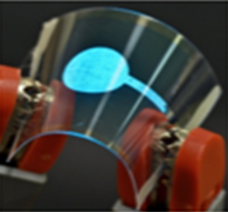 |
Organic & Molecular Electronics► Organic Electronics : OLEDs, organic spintronics (see also the latest result), organic nano-dielectrics, organic memories, circuits with learning capabilities & memristors ► Nanoelectronics : flexible RF electronics (based on graphene, CNTs and MoS2), CNT-based optoelectronics (including CNT-based IR emitters and detectors), 2D material study by high-contrast BALM microscopy (see articles in Science Advances) ► Printed electronics : inkjet-based process for printed copper electronics (PhD thesis of G. Barral), alternative photonic sintering for Inkjet copper inks (projet ANR Photon'ink)
|
|
 |
Sustainability & Waste recycling Read: "New technologies to recycle electronic waste" (The Conversation, 29/03/2020) and learn more here ► Physical method based pre-concentration ► Critical metals recovery and purification, PCBs dismantling and associated electronic component sorting ► Liquid-liquid and Solid-liquid hydrometallurgical recovery processes, Use of supercritical fluid as a green solvent for e-waste recycling ► Selective nanomembranes ► Rapid process development using microfluidics
|
Les effets ioniques dits spécifiques regroupent tous les effets certes d'origine électrostatique mais qui ne peuvent être expliqués par la seule valence des ions. Ainsi, Cl- et Br- ou K+ et Na+ peuvent avoir des effets dramatiquement différents sur la structure et la stabilité colloïdale en biologie, en physicochimie organique et minérale, dans l'environnement… Au-delà du classement phénoménologique de Hofmeister (1888), la compréhension fine de ces effets a fait un bond en avant ces dernières années, d'une part grâce à des techniques modernes de mesure de profils ioniques aux interfaces, d'autre part grâce aux développements théoriques et numériques qui font intervenir le concept de polarisabilité ionique. Depuis quelques années, le LIONS développe ces deux facettes, en particulier depuis fin 2006 dans le cadre du projet ANR 066BLAN-0276 "Spécificité ionique dans les systèmes colloïdaux et aux interfaces" (SISCI). Il s'agit de comprendre les couplages électrostatiques à courte distance (en dessous du nm) entre ions, molécules de solvant et matériaux à la fois en solution et au voisinage des interfaces.
Du point de vue expérimental, le LIONS a développé différentes techniques utilisant la brillance des synchrotrons afin de mesurer le nombre et la distribution spatiale des ions adsorbés aux interfaces: fluorescence X sous incidence rasante à l'interface eau/air ([1], figure 1, stage post-doctoral Viswanath Padmanabhan), ondes stationnaires à l'inrerface liquide/solide.
General objectives
We aim at understanding the microscopic mechanisms controlling the formation of nanoparticles. Different types of NPs are studied in the LIONS and among them gold NPs have already been the subject of several achieved PhD (B. Abécassis and F. Hubert) and on-going in-house studies (J. Han) and collaborative ones (S. Gomez from the Univiersity og Vigo). Our general approach is to consider that quantitative kinetic measurements of the size, size distribution and number of NPs with time together with the gold atoms speciation in solution (Au(III), Au(I) and Au-0)) can serve as a basis to develop a better understanding of the mechanisms involved.
The nucleation and growth mechanism of gold nanoparticles are followed at the millisecond time scale using different in situ techniques. Three different systems are presently studied : nanospheres in toluene (NST), nanorods in water (GNR) and nanospheres in water (NSW). The time scale range from one second (NSW) to 600 seconds (GNR). The sample environment are adapted to the time-scale involved. They are (i) a stopped for the most rapid synthesis, (ii) an home-made millifuidic set-up for water rapid systems and (iii) a simple flow through cell for the GNRs.
Three main synchrotron based techniques are used, SAXS WAXS and XANES both with a high time resolution. ESRF (ID02) and SOLEIL (SWING and ODE) have been intensively used to acquire a unique set of data during the nucleation and growth of these objects.
Nous avons réalisé l'étude de la réponse de cellules ostéoblastiques (MC3T3) à des irradiations contrôlées et ciblées à l'aide du dispositif d'irradiation ion par ion. Cette étude apporte un nouveau regard sur l'effet de voisinage (plus connu sous l'appellation bystander effect), dont l'origine est ici double: signalisation membranaire et mitochondriale. Jusqu'à présent, l'effet bystander était en général évoqué pour expliquer l'apparition d'effets délétères dans des cellules non directement ciblées. Ici, outre cette observation, nous avons également fait apparaitre un effet d'amplification dans les cellules cibles elles-mêmes: ainsi, pour une dose par cellule identique, la réponse à l'irradiation (évaluée par différents marqueurs de l'irradiation comme l'apparition de micronoyaux) est considérablement augmentée quand les cellules voisines sont elles-mêmes irradiées. Il faut donc dans notre cas élargir ainsi le concept de l'effet bystander également aux cellules cibles.











